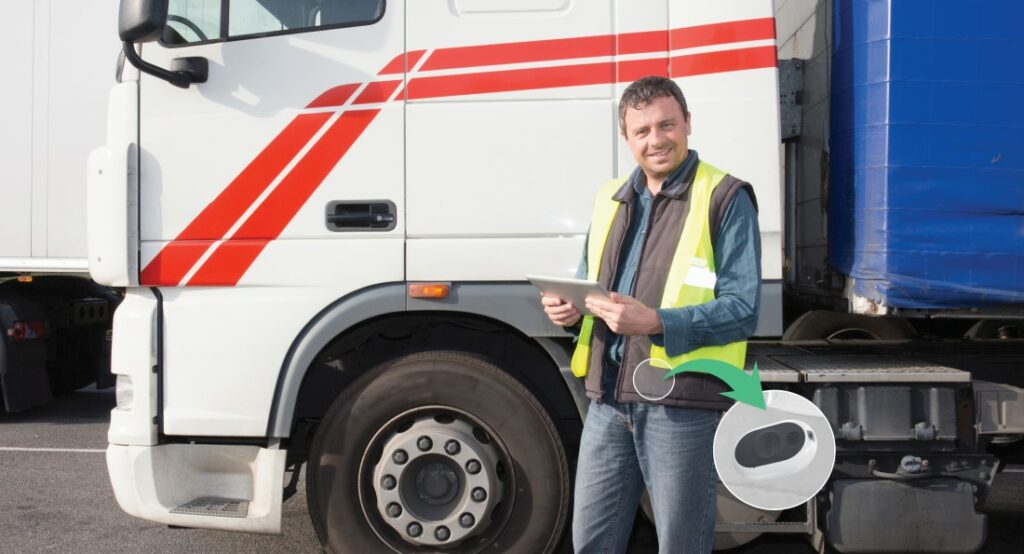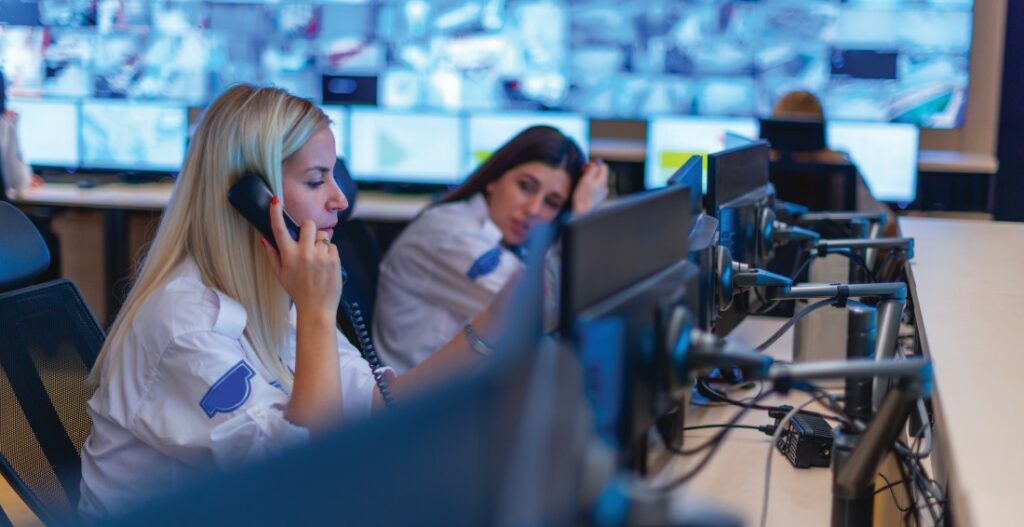PERS & mPERS: Getting Personal, Profitable With Emergency Response
Mobile Personal Emergency Response Systems are expanding opportunities beyond the historical PERS market. See how the mPERS lone worker use case can grow your RMR.

(Image: Halfpoint /stock.adobe.com)
Traditionally, Personal Emergency Response Systems (PERS) have been used mainly in the senior citizen market. Why? According to the U.S. Census Bureau, more than 56 million adults ages 65 and older live in the United States, accounting for about 16.9% of the nation’s population.
By 2030, when the last of the baby boomer generation ages into older adulthood, it is projected there will be more than 73.1 million older adults. This means more than one in five people will be of retirement age. The total number of adults ages 65 and older is projected to rise to an estimated 85.7 million by 2050 — roughly 22% of the overall U.S. population.
Of that amount, nearly 90% of seniors want to stay in their own homes and age in place. Aging in place promotes life satisfaction, a positive quality of life and self-esteem. Being able to remain in one’s home and maintaining a sense of independence is essential. It allows seniors to retain a high level of control so they can continue to live in familiar spaces and maintain routines while contributing to their confidence level.
There is no question that safety is an essential need for adults to age in place. PERS is one of those tools that promote safety within senior homes. Technology, like PERS devices, also gives extended family members peace of mind that their loved ones can request help at a touch of a button. The use of PERS continues to skyrocket, just like the senior population.
Today’s PERS technologies must continue to evolve to meet the demand of aging in place adults. The global 2022 PERS market is estimated at $8.2 billion and is projected to reach $10.7 billion by 2026.
A more advanced technology, Mobile Personal Emergency Response Systems (mPERS), is a significant revenue contributor and the fastest-growing segment compared to in-home PERS systems. This newer technology allows for PERS to no longer be used only within the boundaries of homes.
Improving mPERS technology means a person wearing an mPERS device can obtain assistance anywhere there is cellular connectivity. A person can be protected while running errands, going to the movies, vacationing, traveling to meet a friend or family member or anything else outside the boundaries of their primary residence.
MPERS devices also use GPS and WiFi technology to pinpoint the user’s exact location and cellular technology to connect to a central station monitoring center. An mPERS device ensures that users can always call for help from their medical alert system, whether at home or away. There is no disputing that PERS and mPERS can be essential to senior citizens’ safety.
To date, it’s been the classical use for PERS and mPERS devices. However, mPERS is experiencing an expansion of utilization into a whole new market. It’s being introduced into more markets, most notably into the workplace, where commercial opportunities are growing for all ages and professions. Corporations worldwide are looking for ways to help protect their lone workers and are learning more about the protection that today’s mPERS can provide to their employees.

With mPERS devices like those from Anelto, a lone worker can include detailed info about arrival time and time spent at a location for those delivering or performing services.
What Is a Lone Worker?
A lone worker is an employee who performs an activity in isolation from other workers without close or direct supervision. Such staff may be exposed to risk because there is no one to assist them. Examples of lone workers include:
- In-home health care providers — home healthcare nurses, physical therapists, certified nursing assistants and private duty aides
- Social workers
- Installers, service technicians, delivery drivers and long-haul truckers
- Convenience store, liquor store and gas station employees and other retail establishment workers
- Real estate agents and brokers
- Teachers, aides and other classroom professionals
- Construction, oil and gas workers
These examples show that the mPERS for lone workers’ opportunity is enormous. There are a combined 53 million lone workers in the U.S., Canada and Europe. That represents about 15% of the overall workforce. The International Labor Organization estimates that 2.3 million work-related fatalities happen each year.
Some statistics from Alertmedia.com show considerations for protecting lone workers:
- 44% of workers say they face personal safety issues in their primary place of employment.
- 62% of social workers have been subjected to psychological aggression in the past year, with 86% experiencing this at some point in their careers.
- 15% of social workers have been physically assaulted by clients in the past year, with 30% having experienced this at some point in their career.
- Employee turnover rate is as high as 75% among home healthcare workers.
- 50% of retail workers who are killed are employed alone at late-night establishments, such as liquor stores or gas stations.
The 2019 Realtor Member Safety Report offers additional data:
- 33% of realtors had an experience that made them fear for their safety.
- 5% of realtors report being the victim of a crime on the job.
- 44% of members — 35% of men and 49% of women — carry self-defense weapons such as pepper spray, firearms and knives.
Since mPERS are independent cellular devices, this solution allows for a quick touch of a button in the case of an emergency without having to be tethered to a personal cellphone. For example, a delivery truck driver may have tracking in the cab and a cellphone. But when they run to drop off a delivery, they may not bring their cellphone with them.
Or a home health nurse begins to have an unruly patient or family member and can’t get their phone out of their bag. How about if a construction worker falls and cannot use a cellphone? The time to call for an emergency with a cellphone takes far longer than the push of a single button on an mPERS device.
As an added benefit, mPERS devices can incorporate two-way communications in case a worker is incapacitated and allows for listening in. This would also be helpful in a lockdown classroom situation. Monitoring or tracking lone workers is very different from supervising them from a management perspective. It involves keeping tabs on a lone worker’s location, progress and safety when no one else is around.
Setting up a lone worker with an mPERS device could help a business establish routines and more quickly identify issues, should they arise. With the added mobility, smaller units, and longer battery life of mPERS and integration with apps like RemoteCare 24/7 and GPS, the solutions are more acceptable and effective than ever.

mPERS technology in the hands of lone workers is the first piece of the puzzle. The other important piece is a central station to support lone workers during an emergency. (Image: qunica.com)
Central Stations Are Essential
Having mPERS technology in the hands of lone workers is the first piece of the puzzle. The other important piece includes having a central monitoring station to support lone workers during an emergency. Central stations provide that added peace of mind to the employee and the employer by having the ability to track down lone workers through GPS, communicate over two-way with the person in need of help and summon 911 dispatch to the exact location in an immediate situation.
Some dedicated mPERS devices, like those from Anelto, add additional benefits by having smaller programmable buttons. A lone worker can include detailed information about arrival time and time spent at a location for those delivering or performing services.
Today there are hundreds of monitoring stations throughout the U.S., Canada and Europe that are integrated with various types of mPERS devices with all the same task of keeping seniors and lone workers safe.
Lone Worker Programs Can Add RMR
Traditionally, mPERS monthly recurring revenue (RMR) ranges from $30 to $50, depending on the services and safety features offered. mPERS devices are leased safety alert systems that can be leased out multiple times, extending the profits on that system and providing an ROI to dealers within a few months.
Additionally, the PERS industry has typically seen attrition of medical alert devices around 25%-30% annually due to the elderly population. With a lone worker program, we can assume that the attrition rate will be much lower due to the younger age population and how the systems are being used.
There is a significant opportunity for central stations, dealers and PERS technology partners to help augment their revenue streams by incorporating a lone worker strategy within their platforms. Adding a lone worker safety alert program to your offerings gives your customers one more product to help them stay safe while simultaneously adding another profit center to your business.
Steve Anton is Vice President of PERS Sales at Anelto.
If you enjoyed this article and want to receive more valuable industry content like this, click here to sign up for our FREE digital newsletters!

Security Is Our Business, Too
For professionals who recommend, buy and install all types of electronic security equipment, a free subscription to Commercial Integrator + Security Sales & Integration is like having a consultant on call. You’ll find an ideal balance of technology and business coverage, with installation tips and techniques for products and updates on how to add to your bottom line.
A FREE subscription to the top resource for security and integration industry will prove to be invaluable.













